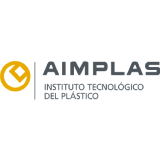The Circular Economy
According to the Ellen MacArthur Foundation, the circular economy “is a system in which materials never become waste and nature is regenerated.” In our current linear economy, we take materials from the Earth, make products from them, and ultimately throw them away as waste. In contrast, in a circular economy, products and materials are kept in circulation through processes such as maintenance, reuse, repurposing, remanufacturing, remanufacturing, recycling and composting. The circular economy addresses climate change and other global challenges, such as biodiversity loss, waste and pollution, by decoupling economic activity from the consumption of finite resources.
Plastics in a Circular Economy
Given the situation in which today’s society is moving, with an ever-increasing demand for resources, plastics have become a key element in the Circular Economy model due to their recoverability and usability as a resource. Sustainable growth requires a shift towards a new model that reduces the use of resources to manufacture new products and, at the same time, is able to deal with waste generation. This implies a transition from the traditional linear model, focused on use and throw away, to a completely new approach, known as the Circular Economy. According to the European Union, its implementation could lead to a reduction in urban waste of up to 65% in the next 5 years.
The Circular Economy of Plastics
Faced with the new scenario, plastics are necessary because they can bring considerable benefits, as they can be reused and recovered as resources.
Thus, the Circular Economy responds to the challenge of sustainability and can become a business opportunity for companies. By improving plastics management systems and extending the useful life of materials, greenhouse gas emissions can be reduced, generating employment while also greatly limiting the demand for fossil energy.
In order to create a circular economy for plastics, three actions are needed:
1. Minimize
Minimize the use of raw materials, encouraging the use of recycled materials, thus generating a smaller amount of waste.
2. Innovate
Develop innovative solutions to ensure that the plastics we need are reusable, recyclable or compostable.
3. Circulate
Circulate all plastic items used so that they remain in the economy and out of the environment.
Our Commitment to Circular Plastics
At SINTAC we are committed to the circularity of plastics and encourage the development towards a more sustainable and circular industry; therefore, we commercialize 100% recycled and recyclable materials and we have the Recycling Process Certificate from Recyclass, which recognizes that the audited recycling process and associated management systems meet the requirements of the EN 15343:2007 standard, thus guaranteeing the traceability of our recycled plastics.













